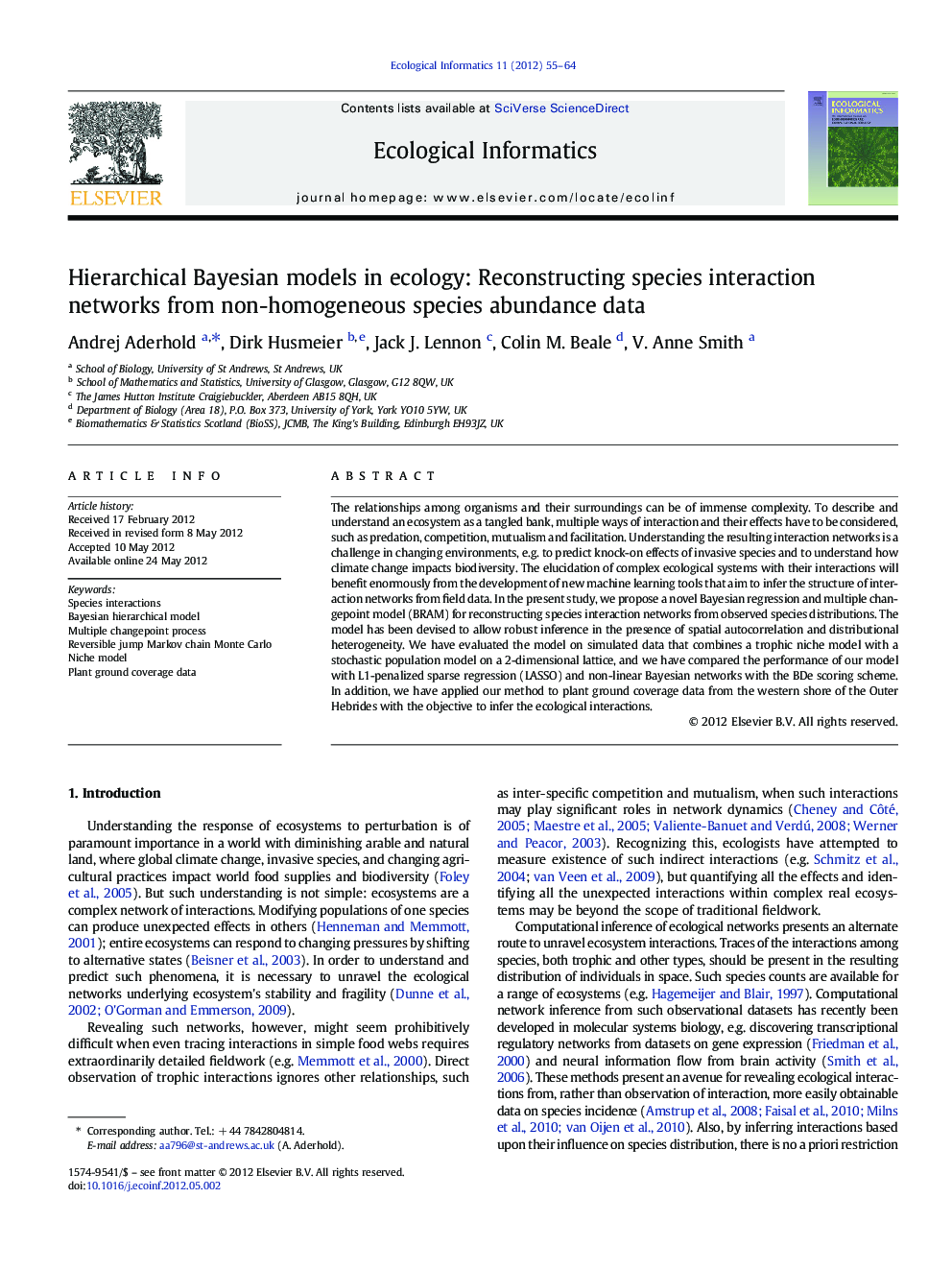| کد مقاله | کد نشریه | سال انتشار | مقاله انگلیسی | نسخه تمام متن |
|---|---|---|---|---|
| 4375081 | 1617221 | 2012 | 10 صفحه PDF | دانلود رایگان |

The relationships among organisms and their surroundings can be of immense complexity. To describe and understand an ecosystem as a tangled bank, multiple ways of interaction and their effects have to be considered, such as predation, competition, mutualism and facilitation. Understanding the resulting interaction networks is a challenge in changing environments, e.g. to predict knock-on effects of invasive species and to understand how climate change impacts biodiversity. The elucidation of complex ecological systems with their interactions will benefit enormously from the development of new machine learning tools that aim to infer the structure of interaction networks from field data. In the present study, we propose a novel Bayesian regression and multiple changepoint model (BRAM) for reconstructing species interaction networks from observed species distributions. The model has been devised to allow robust inference in the presence of spatial autocorrelation and distributional heterogeneity. We have evaluated the model on simulated data that combines a trophic niche model with a stochastic population model on a 2-dimensional lattice, and we have compared the performance of our model with L1-penalized sparse regression (LASSO) and non-linear Bayesian networks with the BDe scoring scheme. In addition, we have applied our method to plant ground coverage data from the western shore of the Outer Hebrides with the objective to infer the ecological interactions.
► We reconstruct species interaction networks from species abundance data.
► 2-dimensional change-point process allowing for unknown latent and hidden variables.
► Species dispersal effects and realistic networks are used to benchmark performance.
► Our novel 2-dimensional change-point process improves network reconstruction accuracy.
► We outperform other state-of-the-art methods for ecological network reconstruction.
Journal: Ecological Informatics - Volume 11, September 2012, Pages 55–64